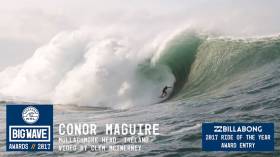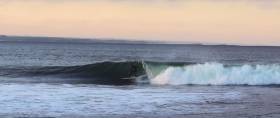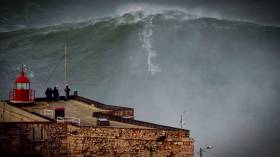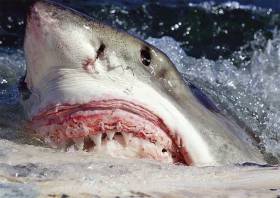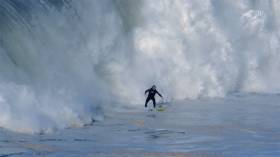Displaying items by tag: Surfing
New Documentary Charts Lahinch’s Surfing Culture
#Surfing - Between Land and Sea is a new documentary on the surfing culture of Lahinch that’s currently touring with screenings around Ireland, as TheJournal.ie reports.
Chronicling ‘a year in the life of an Atlantic surf town’, Ross Whitaker’s film set out to capture the characters of the Co Clare coastal spot that’s become a gateway to some of Ireland’s most spectacular waves.
Big wave surfing isn’t just a sport for its top names — it’s a lifestyle. And the film gets to know a number of those who have made it their life’s work to get in harmony with their environment.
Among them are Ollie O’Flaherty, a regular at the Riley’s break at Lahinch as well as Aileen’s under the Cliffs of Moher, and Fergal Smith, the subject of two other recent films on the organic farming collective he’s helped establish for himself and fellow wave chasers.
Smith also features in Common Ground, a new film from Finisterre in which the surf clothing brand’s ambassadors — including women’s surfing pioneer Easkey Britton — met to share their challenges and achievements thanks to the power of the waves, as Huck reports.
Another recent surfing video from Red Bull shows what happened when Barry Mottershead invited American surfers Cody Thompson, Justin Quintal and Nate Zoller to taste the waves of the Wild Atlantic Way.
#SUP - South African adventurer Chris Bertish has become the first man to cross the Atlantic by stand-up paddleboard, as the Guardian reports.
The big wave surfer took 93 days to traverse the ocean from Agadir in Morocco to Antigua, where Ireland’s ocean rower Gavan Hennigan set his own transatlantic record in January.
That effort required Bertish, 42, to paddle some 43 miles a day on his custom 20ft expedition paddleboard designed by Phil Morrison, the naval architect also responsible for the latest National 18 design.
The Guardian has more on the story HERE.
Two Irish Surfers Up For 2017 Big Wave Prize
#Surfing - Two Irish surfers are nominated for ride of the year in the 2017 WSL Big Wave Awards after taking on the monster swell at Mullaghmore Head last month.
Conor Maguire and Peter Conroy were in the right place at the right time on 9 February to get a tow-in to the ‘emerald walls’ at the surfing hotspot off Co Sligo.
Bundoran resident Maguire found himself barrelled by the kind of surf usually associated with the big wave paradises of the Pacific.
Meanwhile, Northcore team member Conroy, from Co Clare, caught his own massive wall of water to stake his claim among the world’s top riders.
Both clips were captured by Clem McInerney, who was also on hand to shoot one of American surfer Will Skudin’s two nominated efforts at Mullaghmore — as well as Dublin-based Emirati surfer Mo Hassa Rahma’s spectacular wipeout, as The National reports.
Surfing In Ireland Is A Sure Shot For All Experience Levels
#Surfing - It’s no longer such a secret that Ireland has some of the most sought-after swells among the world’s top big wave surfing talent.
But beginners aren’t left out of Surfer Today’s list of '10 surf spots you must visit in Ireland', with Inchydoney in West Cork and Achill Island in Co Mayo noted for their scenery as much as their perfect starter waves.
Sligo features on the list with two wave hotspots, Enniscrone and Easkey — both just west of Sligo town, which again hosts the Shore Shots Irish Surf Festival on the weekend of 22-23 April.
The North West is also the ancestral home of Irish-Australian surf pro Mick Fanning — famous for his close call with a shark off South Africa in 2015 — who recently paid a visit to sample the surf for himself, as documented in this new Rip Curl video:
Surfing Farmers Make Waves In Co Clare
#Surfing - Lahinch-based surfing pro Fergal Smith is the subject of not one but two recent online documentaries — and neither for his big wave exploits.
Smith turned to organic farming after a globetrotting surfing career, teaming up with fellow wave-riders Mitch Corbett, Matt Smith and others to start the Moy Hill Community Garden.
Having grown up around organic farming all his life, Smith saw an opportunity to share what he learned with his fellow surfers — and encourage young people to get interested caring for the land.
Their organic farming collective and its location on the stunning Wild Atlantic Way are the subjects of ‘Beyond the Break’, a short film for The Perennial Plate — a series that aims to highlight local producers around Ireland’s breathtaking landscape, as the Clare Herald reports.
Yet at the third episode of ‘food ranger’ Mark Harris’ Endless Winter Europe series shows, Smith and his surfing mates still make time for the water when the surf is up.
‘World’s Biggest Wave’ Recorded Off Ireland
#RecordWave - Nineteen metres is the height of what’s being called the world’s largest wave, recorded recently off the North West Coast of Ireland.
Independent.ie reports on the record-breaking swell detected by a weather buoy in the North Atlantic between Ireland and Iceland, following what the World Meteorological Organization’s (WMO) Commission for Climatology described as a “very strong” cold front that passed through at more than 80km per hour.
WMO Assistant Secretary-General Wenjian Zhang said: ”This is the first time we have ever measured a wave of 19 metres. It is a remarkable record.”
The new measurement beats the previous record of 18.275 metres recorded in the North Atlantic nine years ago.
But while the news is causing gasps around the internet, for some it only confirms what’s long been known — that Ireland is on the doorstep of a big wave paradise.
Indeed, Ireland’s North West is no stranger to monster swells, with the giant surf offshore from Mullaghmore in Co Sligo a well-kept secret among the big wave surfing fraternity.
Surfing Pioneer Gives Keynote At Adventure Tourism Conference
#Adventure - Pioneering Irish surfer Easkey Britton was keynote speaker at the fifth annual International Adventure Conference in Tralee last week, as The Kerryman reports.
The event attracted experts from as far afield as New Zealand for three days of talks on the future of adventure tourism – plus a number of outdoor excursions.
Kerry aims to compete with the likes of Donegal in the increasingly popular adventure tourism stakes, which comprise such white-knuckle activities as surfing, sea kayaking and climbing along Ireland’s rugged coasts.
Donegal recently hosted the 50th anniversary of surfing’s arrival in Ireland, and RTÉ’s Barry O’Neill was on hand to discover how the sport has contributed to the lives of often distant coastal communities.
Fifty Years Of Irish Surfing Celebrated In Rossnowlagh Next Weekend
#Surfing - Fifty years of Irish surfing will be celebrated in Rossnowlagh this month, as the Donegal Democrat reports.
A gala dinner during the Rossnowlagh Intercounties next weekend (15-16 October) will mark five decades since the formation of what was then the Surf Club of Ireland by Kevin Cavey, who was influenced by images of surfing in a Reader’s Digest magazine.
Cavey himself inspired the legendary Britton clan in Rossnowlagh, and the family’s Sandhouse Hotel soon became a focal point for Irish wave-riding.
Fast-forward to today and Ireland, and the North West in particular, is among the world’s stop surfing destinations, producing world-class talent such as women’s surf pioneer Easkey Britton.
But the Irish Surfing Association’s golden jubilee dinner at the Sandhouse next Saturday 15 October is an opportunity to look back fondly at memories and happenings from Irish surfing’s earliest days. Irish Surfing has more HERE.
Wexford Man Nominated For Top Award After Rescuing Best Friend From Shark Attack
#Surfing - An Irishman has been praised for his heroism after saving his best friend from an attack by a great white shark in Australia just over a year ago.
As Independent.ie reports, Shane de Roiste leapt into action when his friend Dale Carr was bitten by the ferocious ocean predator while the pair were surfing off Port Macquarie in New South Wales.
"It really is like you see in the Jaws movies," said Wexford man de Roiste recalling that fateful day in August 2015. "The person is just shaken around in the water.”
Carr finally fought off the shark by jamming a thug into one of its eyes, but we was left with a severe bite on his thigh and was losing a lot of blood.
De Roiste remained with his friend throughout, paddling him back to shore and using laces from the fins of Carr's body board to keep the wound closed till help arrived.
The Irishman has now been nominated by his friend for a Pride of Australia award, the winners of which will be announced this November.
The attack just over a year ago was one of a number of incidents reported in the eastern Australian state in the latter half of 2015.
Independent.ie has more on the story HERE, while de Roiste shared his story with Matt Cooper on Newstalk's The Last Word yesterday evening.
New Big Wave Hotspot Discovered Off Irish Coast
#Surfing - Chasing the most challenging swells is the dream of the world's top big wave surfers, who've made an art of determining where the tallest walls of water can be found.
But now one Irish coastal regular reveals how he turned to science for his discovery of a new secret hotspot off the North West.
As Mail Online reports, Andrew 'Cotty' Cotton consulted with weather analysts and oceanographers in poring over satellite data to find the offshore sweet spot – generating waves that averaged some nine metres, or 30 feet – after the stormy winter of late 2014.
However, the Devon surfer believes the location could produce swells more than twice that size – and may even break the record for the biggest wave ever surfed as set at Nazaré in Portugal by Garrett McNamara in 2013.
Cotty's quest is the subject of a new documentary on RedBull.tv, while Mail Online has much more on the story HERE.




























